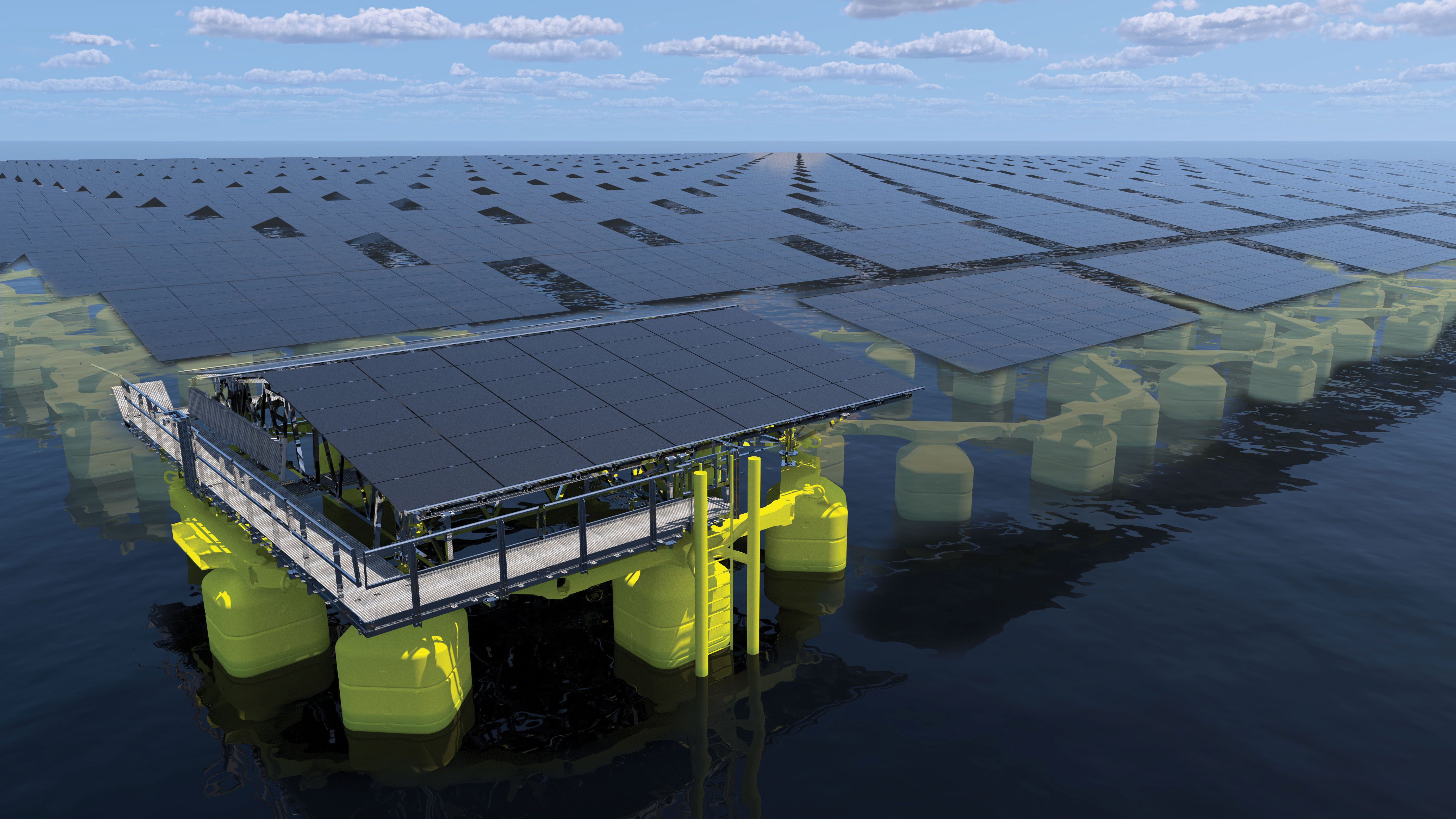We began our activities by developing traditional sources of energy and then we embarked on the development of renewables, such as wind and solar energy. Both energies play a key role in energy transition, as it is renewable, clean and available throughout the world. Photovoltaic solar energy (PV) is the most cost-effective source of renewable energy that is abundantly available worldwide and can be easily implemented. We carry out complex projects that fully integrate traditional technologies with photovoltaic installations to contribute to the decarbonisation of the production sector. By exploiting the expertise of our Norwegian company, Moss Maritime, we have the skills to develop floating photovoltaic installations near-shore and offshore. Our patented solution enables:
- a modular design that facilitates construction and repair
- customisation to adapt to various sites and requests for power
- operations in waves without damaging the solar panels
Part of the technology development has been a joint effort by Saipem, Moss Maritime and Equinor where we have combined our commitment and expertise when carrying out engineering and model and component testing in laboratories as well as full-scale. The development phase of the first-generation design is complete, and the demonstration stage initiated. Second and third generation design development is in progress to optimize the technology for harsh and semi-harsh environmental conditions.
The technology is based on the concept of a floater specifically designed for marine environments, developed internally by Moss Maritime, one of Saipem’s subsidiary companies. Its design grants significant flexibility as it is formed by "islands", each one consisting of several smaller floaters providing a safe space for the photovoltaic panels. The size of each island and the number of islands in a park is tailor-made to fit any capacity requirement. The system is designed to be easily manufactured, transported and installed where it will be used.
XolarSurf represents a new frontier in the floating solar segment, capable of being installed in any coastal or offshore location, even under harsh environmental conditions. It offers an optimal solution for hybrid projects, such as offshore wind farms, both fixed and floating. This technology is particularly suited for locations with limited access to land, remote areas, stand-alone grids, and can provide electricity to the growing aquaculture industry, both near shore and for new planned offshore installations. The modular design of XolarSurf allows it to be easily relocated to new sites or expanded in its existing location.
